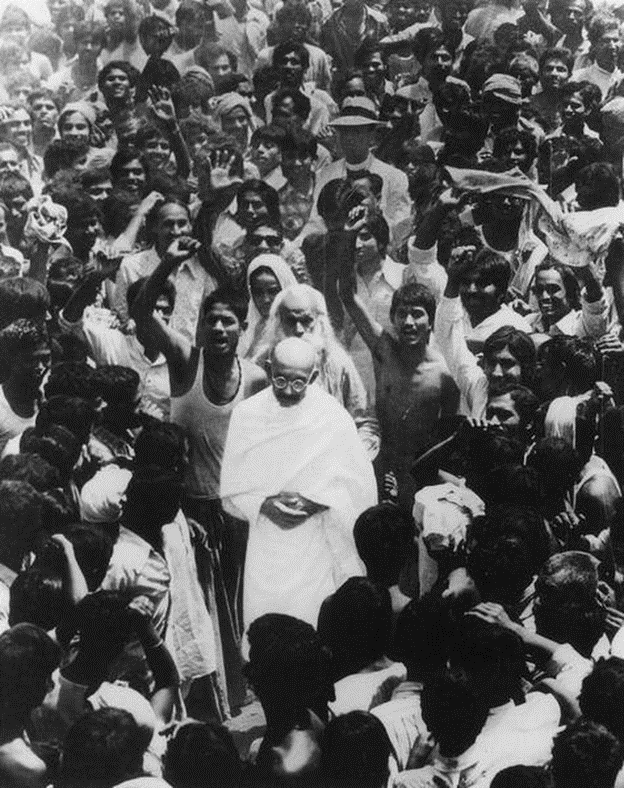Updated February 13, 2023
India’s First Civil Disobedience Movement
On a day similar to this one hundred years ago, Mohandas Karamchand Gandhi or Gandhiji rode an uncomfortable train to Champaran to organize India’s first civil disobedience movement. Several farmers in the Champaran Bihar district were under compulsion to cultivate indigo on their estates during the British era, mainly to their shame. Raj Kumar Shukla, a moneylender, contacted Gandhiji to ask him to come and aid them in their struggle against this.
(Image credit: thehindu.com)
Champaran Satyagraha
Gandhi stated in his autobiography that before this, he had never even heard of Champaran. Nevertheless, on April 10, 1917, he traveled to this area with a group of attorneys, including Dr. Rajendra Prasad, to engage the British in battle. The Indigo Riots in 1859–1860 had occurred, but this conflict was very different. The preparations started. Gandhi and his attorneys visited various villages throughout the area, speaking with farmers and noting their pains and grievances regarding the forced indigo planting.
Since Gandhi landed in Champaran, the British emperors have closely monitored his activities. Finally, the commissioner handed him a final warning to leave Champaran at Motihari on April 15. The Champaran Satyagraha combined aspects of the extra-constitutional conflict using moral power against an opponent who served as an example of the rule of law and the implication of compromise as a stratagem. Mahatma Gandhi began it as India’s first civil disobedience movement to protest the unfair treatment of tenant farmers in the Champaran area of Bihar.
The Champaran district was a fixed settlement area of vast zamindari estates ruled by powerful and wealthy landowners. The thikadars, the much more influential of whom were European indigo planters, were given leases on the majority of the villages by the zamindars. Although the farmers only held a short lease, they exercised civil and criminal jurisdiction in addition to collecting rent from the peasants.
Facts about Champaran Satyagraha
In 1917, Gandhiji traveled with Raj Kumar Shukla to Champaran. When he arrived, the District Magistrate gave him a notice instructing him to leave the Champaran district as soon as a train was available and not to stay there. Gandhi ignored this directive. He received a court appearance summons. If you leave the area immediately and pledge not to come back, the magistrate added, the case against you would be dropped.
Gandhi retorted, “This is not possible. I came here to serve the country and the humanitarian cause. I’m going to move to Champaran and work for underprivileged people. Gandhi demonstrated his captivating qualities when he appeared in front of the audience and commanded them to remain silent to demonstrate their belief in him and his work. I defied the magistrate’s order. Thus, he had the right to arrest me. You must regard it as just if I’m locked up. And a violent act would be detrimental to our cause.”
Peacefully, the gathering dispersed. Gandhi entered the court, drawing admiring looks from the cops. Gandhi got permission to stay in the district when the government dropped its charges against him. Gandhi stayed there to research the peasants’ complaints.
Champaran Satyagraha Background
He settled down in Bettiah village’s Hazarimal Dharamshala. He then traveled to other communities in the area to learn about the problems that the peasants faced. To comprehend their problems and the underlying causes, he documented the statements and testimony of 8,000 indigo growers.
On November 13, 1917, he opened the first primary school in the village of Barharwa Lakhan Sen, 30 kilometers east of the district seat in Dhaka, East Champaran, to better the socioeconomic and educational standing of the locals. With the assistance of Sant Raut, he also opened two other elementary schools in Bhitiharwa in West Champaran and Madhuban in the same district.
The landowners were eventually bound to sign an agreement offering more pay and authority over farming to the region’s poor farmers and a reversal of revenue hikes and collection until the hunger was over after he coordinated mass protests and strikes against them. Gandhi was referred to as Bapu (Father) for the first time by Sant Raut and Mahatma during this protest (Great Soul).
Gandhi exhibited that charismatic personality for the first time in India, which drew crowds to him and helped him gain the title of Mahatma and the moniker Bapu. The Government of Bihar established a commission of investigation after receiving government pressure from India (June 1917).
The Champaran Agrarian Act of 1917 and executive directives that gave different concessions and limited rent increases helped implement some of the committee’s ideas.
Outcomes
Lastly, the Champaran movement had the following outcomes:
- The passage of the Champaran Agrarian Bill was a massive relief for indigo farmers and land tenants.
- Satyagraha evolved into a cutting-edge strategy that Mahatma Gandhi would use to significant effect in the Indian Independence movement.
- Gandhiji got a platform to become a great influential national leader.
Recommended Articles
We hope that this EDUCBA information on “Champaran Satyagraha” was beneficial to you. You can view EDUCBA’s recommended articles for more information,

